Discover 11 hidden attractions, cool sights, and unusual things to do in Caceres (Spain). Don't miss out on these must-see attractions: Cave of Maltravieso, Cáceres Cathedral, and Old Town of Cáceres. Also, be sure to include El Corral de las Cigueñas in your itinerary.
Below, you can find the list of the most amazing places you should visit in Caceres (Extremadura).
Table of Contents
Cave of Maltravieso
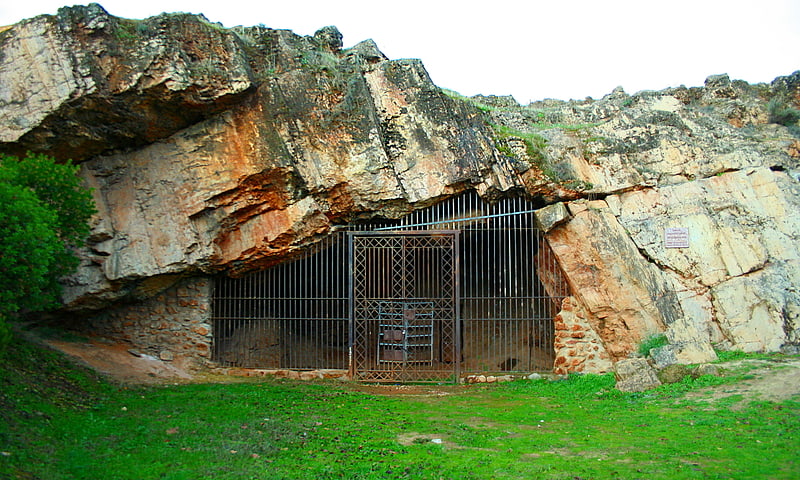
The Cave of Maltravieso in Cáceres, Extremadura, Spain, was discovered in 1951. It shows traces of human occupation from the Middle Paleolithic. It contains cave art, most notably a total of 71 hand stencils, enumerated in the 1990s using ultraviolet photography, but also linear designs and some animal paintings. In a 2018 study based on uranium-thorium dating, a hand stencil from the Cave of Maltravieso was dated to 64,000 years ago. This would make it Middle Paleolithic art, predating the presence of European early modern humans, with important implications for Neanderthal behavior.
A visitor center, the Centro de interpretación de la Cueva de Maltravieso, opened in 1999. Other nearby Paleolithic caves are those of El Conejar, Santa Ana and Castañar de Ibor.[1]
Cáceres Cathedral
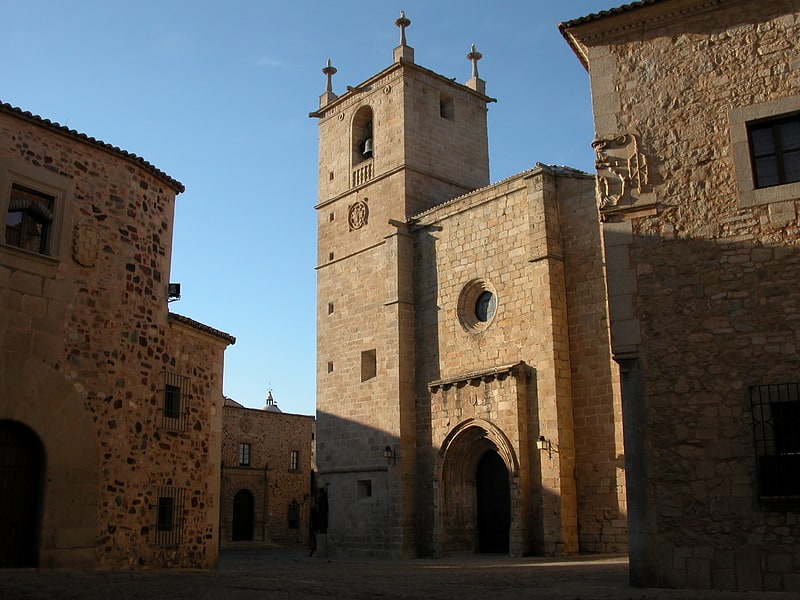
Also known as: Concatedral de Santa María de Cáceres
Cathedral in Cáceres, Spain. The Co-Cathedral of Cáceres is a Roman Catholic church in the town of Cáceres, region of Extremadura, Spain.
The cathedral was erected in the 15th century in a Gothic style, with the main portal following the Romanesque architectural tradition. The main 16th-century retablo, dedicated to the Assumption of the Virgin, was carved by Roque Balduque and Guillen Ferrant. The interior has notable artworks and sculptures, including a San Pedro de Alcantara by Enrique Pérez Comendador.
This church was granted the status of co-cathedral in 1957; it shares Coria's diocese.[2]
Address: Plaza de Santa María, 10003 Cáceres
Old Town of Cáceres

Also known as: Ciudad vieja de Cáceres
Old Town of Cáceres is an historic walled city in Cáceres, Spain.
Cáceres was declared a World Heritage City by UNESCO in 1986 because of the city's blend of Roman, Moorish, Northern Gothic and Italian Renaissance architecture. Thirty towers from the Islamic period still stand in Cáceres, of which the Torre del Bujaco is the most famous.
There have been settlements near Cáceres since prehistoric times. Evidence of this can be found in the caves of Maltravieso and El Conejar. The city was founded by the Romans in 25 BC.
The Old Town (Parte Antigua) still has its ancient walls; this part of town is also well known for its multitude of storks' nests. The walls contain a medieval town setting with no outward signs of modernity, which is why many television shows and films have been shot there[3]
El Corral de las Cigueñas
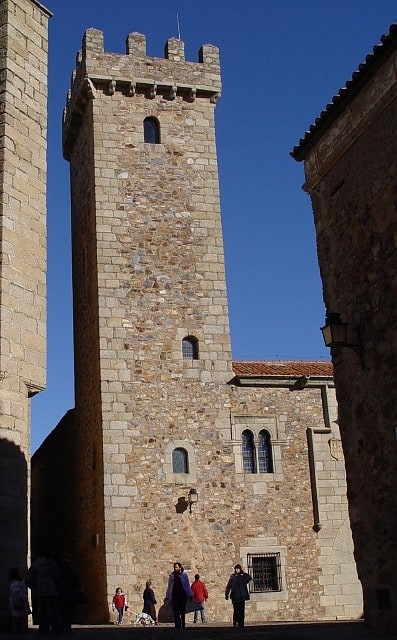
The palace of the Storks or house of the Cáceres-Ovando is a 15th-century historic building located in the Spanish city of Cáceres. It is located in the highest part of the monumental enclosure of the city, in the Plaza de San Pablo, one of the small squares on which extends the Plaza de San Mateo.
It is known by this name because of the large number of storks that nested in it. It was built at the end of the 15th century and the beginning of the 16th century by Diego Fernández de Cáceres y Ovando, probably in the surroundings of the old Almohad fortress, building it mainly with masonry. The façade consists of a simple semicircular arch with voussoirs over which there is a window and two coats of arms of the Ovando-Mogollón family. On the sides, on the first floor, we find two biforas with pointed horseshoe arches. Inside, the Gothic courtyard stands out.
But what really stands out is its high tower with merlons supported by small corbels. It is the only tower that has not been demolished in the historical enclosure. The house of the Ovando family was spared from the royal order of Isabella the Catholic, issued against the towers of all the houses because of their loyalty to Juana la Beltraneja in the dispute for the throne of Castile. After the coronation of Isabel, Diego Fernández de Cáceres y Ovando was granted the right to build the tower in 1480. The palace continued to be inhabited for several centuries by the descendants of the Cáceres-Ovando family, passing to the branch of the Marquises of Camarena.
It was renovated in the 1940s to house the headquarters of the Military Government and is currently still in the possession of the Ministry of Defence. In addition to housing military administrative offices, it is open to the public as a cultural centre in which a military museum and exhibition halls have been set up. In 2018 its tower was also opened to the public, of great scenic value for the views it offers of the old part of the city.
Address: the Plazuela de San Pablo, Caceres
Centro de Artes visuales Helga de Alvear

The Museum of Cáceres is a Spanish public institution in the city of Cáceres. It has state ownership and its management is transferred to the Junta de Extremadura.
Address: calle Pizarro 8, Caceres
Church of the Blessed Virgin Mary
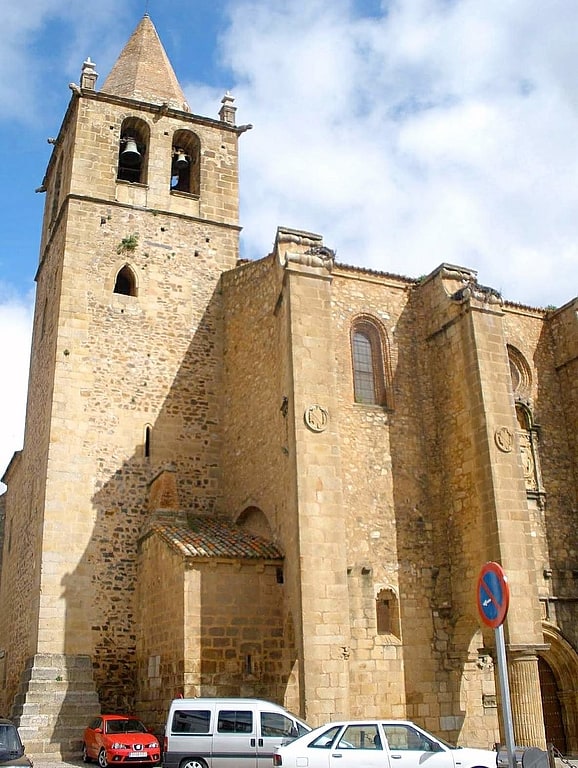
Also known as: Iglesia de Santa María
Historical place, Museum
Address: Plaza de Santa María, Caceres
Church of Santiago
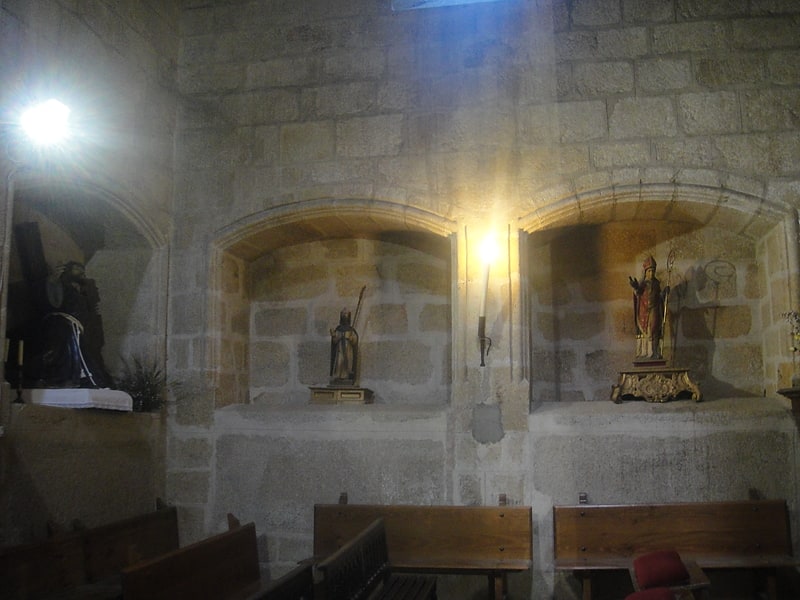
The church of Santiago de los Caballeros is a Catholic parish church of medieval origin located in the Spanish city of Cáceres. It belongs to the district of Santiago, to which it gives its name, within the district Centro-Casco Antiguo, and is part of the historical heritage of the Extramuros de Cáceres.
It was one of the four historic parishes that existed in the city until the nineteenth century, along with those of Santa Maria, San Mateo and San Juan. In 1949, the temple was declared of Cultural Interest as part of the historical complex of Caceres.
Iglesia de San Francisco Javier
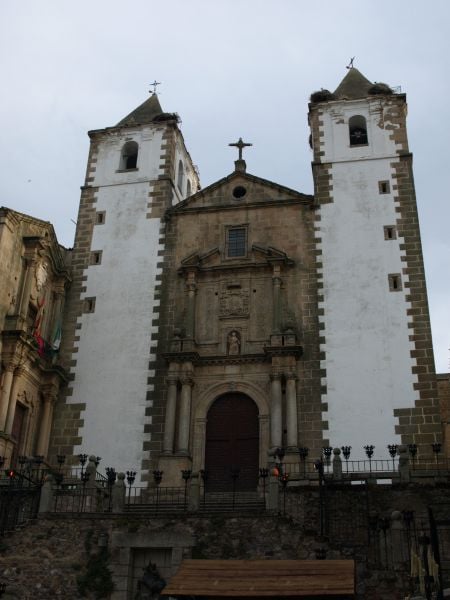
Church
Biblioteca Pública de Cáceres
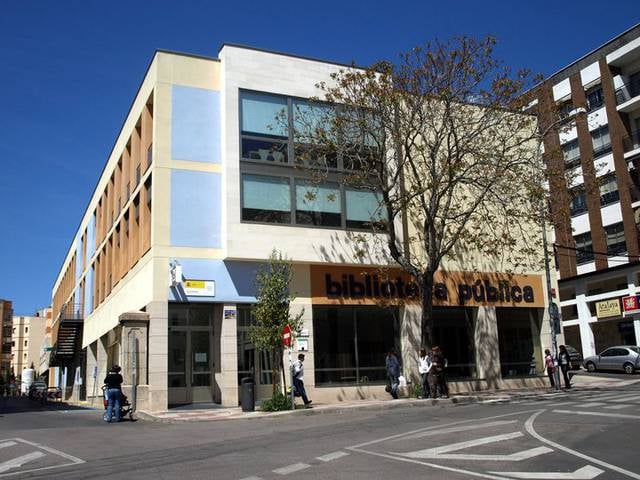
Library
Address: Calle Alfonso IX, 26, Caceres
Torre de Bujaco
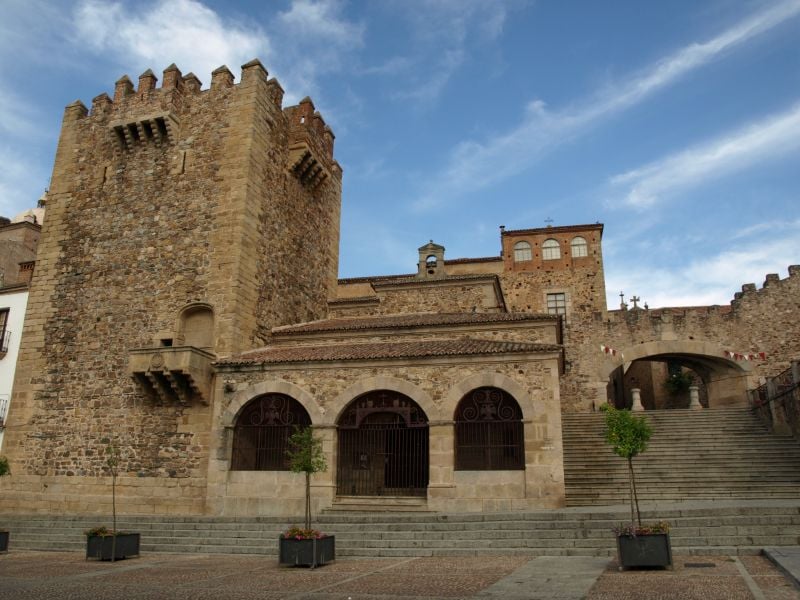
Museum
Address: Calle de Adarve Obispo Álvarez de Castro, 1-3, Caceres
Musei Arabe de Yusuf al Burch
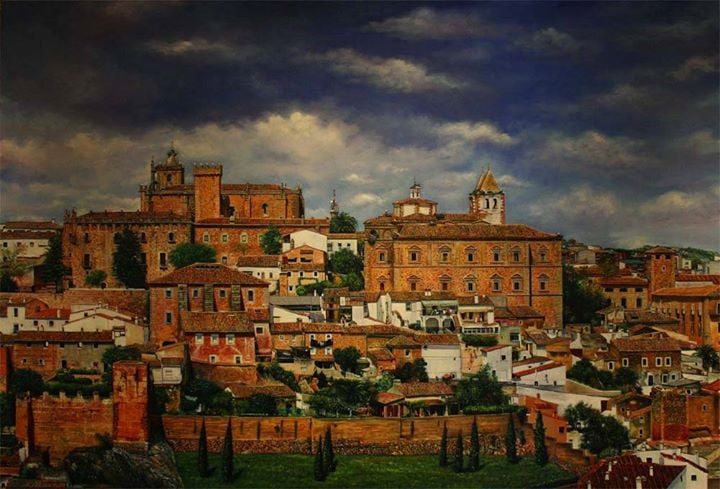
Museum
Address: Cuesta del Marqués, 6, Caceres